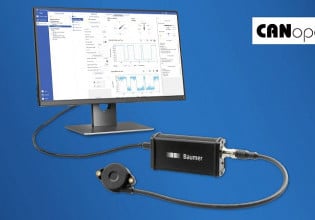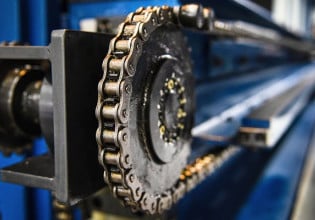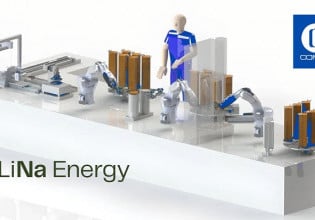Accelerometers and Gyroscopes: Understanding The Metrics of Motion
Many sensors, like prox, optical, and ultrasonic, are familiar to control engineers. More and more modern devices are incorporating advanced motion profiles requiring motion sensing in many axes.
The market of ‘sensors’ is slated to be one of the top-growing categories across the industrial automation market in the next few years (according to data from MarketsandMarkets). Perhaps unsurprisingly, because the availability of networked ‘smart’ devices can allow hundreds or thousands of sensors for even small systems. They are also among the lowest-cost industrial components, so it makes sense that we are likely to see massive growth in sensors.
How Many Types of Sensors Are Out There?
There are literally hundreds of quantities that can be measured, including speed, size, shape, color, noise, temperature, weight, voltage, current, motion, and the list keeps going on and on. For each quantity, there are a wide range of sensors to capture that data in a meaningful way.
Traditionally, most industrial sensors, being designed for reliability, ruggedness, and simplicity, only measure a single quantity. When you go to buy the sensor, it will clearly be labeled in its own product category from the vendor.
As modern devices become more complex, the requirements for capturing more complicated data also continue to rise.
Two sensors stand out as having evolved from use inside consumer devices to now being included within more and more industrial applications. These are the accelerometer and the gyroscope.

Figure 1. An industrial accelerometer for vibration sensing Image used courtesy of Hansford Sensors
What is an Accelerometer?
Accelerometers measure changes in velocity in a particular direction. If you speed up, slow down, or turn, you have changed your velocity in some direction.
How Do Accelerometers Work?
There are many ways to measure acceleration (usually including piezoelectric effects), but one of the most common involves two very, very tiny semiconductor structures that resemble teeth on a comb. When nested into each other (but not touching), there is some capacitance, being conductors separated by an insulative gap.
When motion changes, the teeth come closer or they separate further apart, changing the capacitance. Once the motion is steady again (not necessarily stopped, but a constant value), the capacitance returns to the original level.

Figure 2. One type of accelerometer uses gaps between conductors to measure capacitance. Image used courtesy of Level Developments
By measuring this capacitance, the sensor can very accurately detect any changes in velocity. With the small semiconductor structure, even a tiny sensor can house accelerometers in X, Y, and even Z directions, for 3-axis accelerometers.
The Z-axis is a bit trickier for applications that are placed horizontally. Gravity will pull down with a constant acceleration (9.8 m/s2), so the designer of the module must be able to compensate for that value to distinguish between gravity and an actual change in motion.
What Are Accelerometers Used For?
These 3-axis accelerometers are used when complex motion is a deciding factor. Condition monitoring modules are one of the fastest-growing industrial uses of accelerometers. Vibration sensors on motors and bearings will benefit from analysis of changing motion. Drones and mobile robots, especially ones that might experience changes in traversing incline, will also benefit from these tiny, efficient sensors.
What is a Gyroscope?
Similar to the accelerometer, a gyroscope can sense changes in directional motion, but in a way that relies on a change in angular momentum. This means that, while the accelerometer is great at measuring acceleration along three linear axes, a gyroscope excels at measuring rotation, or tilt angles.

Figure 3. A gyroscope (combines with an accelerometer) module for rugged industrial uses. Image used courtesy of Analog Devices
How Do Gyroscopes Work?
Two main principles are used to capture rotational displacement. The classical method uses the rotation of a mass to maintain an upright posture. While the outside of the object rotates, the rotating mass maintains a perfect level, and the difference between the two is the angle. As you might expect, this method is too large and suffers too much mechanical wear to be of use inside a tiny industrial sensor.

Figure 4. Model and diagram of a quartz tuning-fork gyroscope. Image used courtesy of Maoyan Fan, School of IT and Engineering, Yuxi Normal University
The most modern method uses quartz crystals, which vibrate (oscillate) at a very consistent rate when subjected to a small voltage. Any angular displacement causes a slight change in the vibration frequency which is read by a quartz tuning fork connected to external circuitry. This method is extremely small and very precise.
What Are Gyroscopes Used For?
These sensors are actually used alongside accelerometers to make a combined measuring system with 6 different degrees of freedom (three for linear motion and three for angular motion). Drones, humanoid robots, and other mobile platforms make use of these combined sensors.
Gyroscopes can also be placed in high-speed machinery to measure any changes in deflection angle from flexible components, allowing a PID loop to compensate for unforeseen motion and help the machine land more accurately on the target. Notably, Epson Robotics’ SCARA designs equipped with the Gyroplus technology use this sensing technology to further increase speed and precision.
Many Sensors for Many Industrial Applications
These are certainly not the only new sensors on the market today, but since they rely on more mysterious electrical properties, and since they are usually hidden inside more complex embedded controllers, they can be more difficult to understand.






